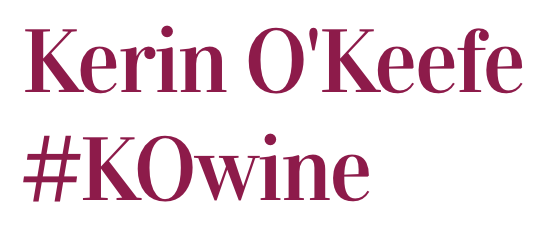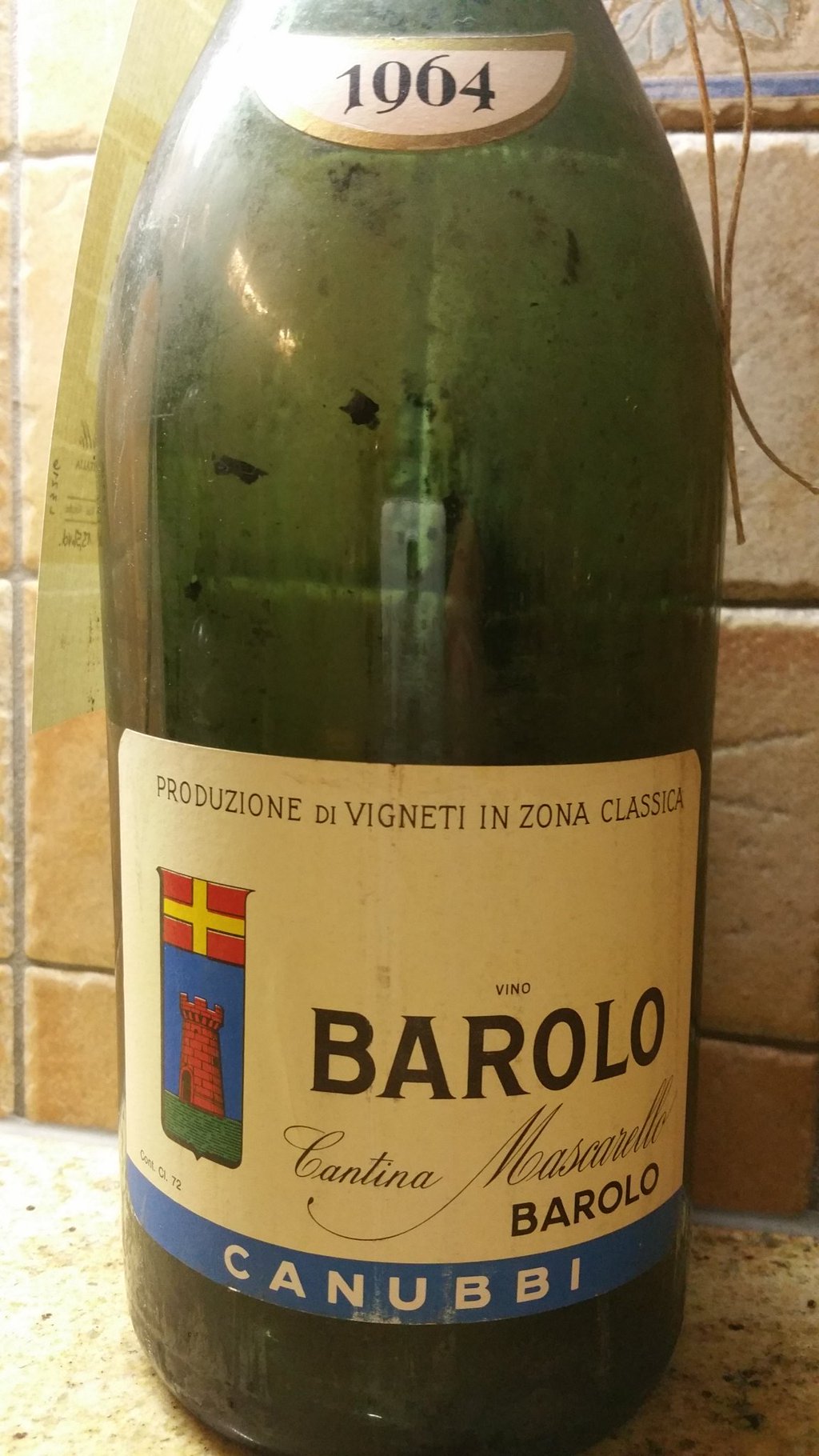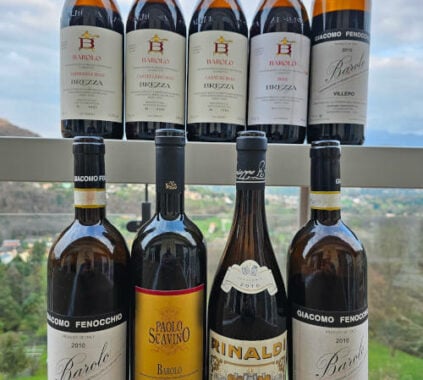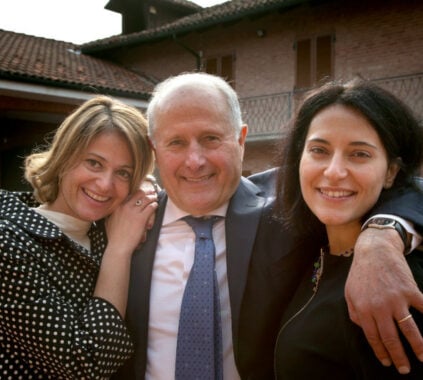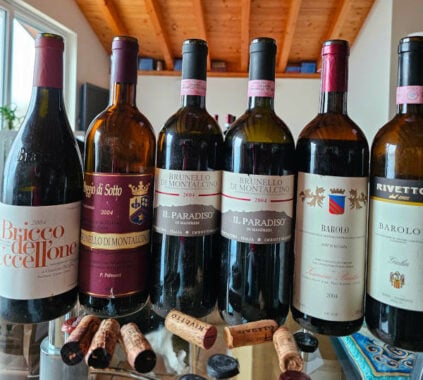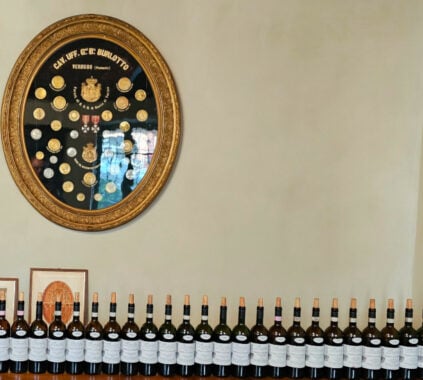Thanks to a string of outstanding vintages over the last two decades, Italy’s most celebrated wine regions are on a roll: Barolo Barbaresco, Brunello di Montalcino, Bolgheri and Taurasi.
Even though years like 1964, 1971 and 1978 are legendary in Piedmont, and 1955, 1970 and 1975 evoke similar feelings in Tuscany, stellar vintages used to be few and far between. But toward the late 1990s, things began to change. Better vineyard management — better clones, lower yields and gentler/fewer chemical treatments — coupled with drier, warmer growing seasons throughout the peninsula have regularly produced wines that can age gracefully for decades.
Producers point out that until the mid-1990s, they used to have two, occasionally three, outstanding vintages every decade. The other years were mediocre, if not downright dismal. Now, it’s the opposite. Each of the last few decades have boasted seven or eight very good to outstanding vintages.
Here’s a summary of Italy’s most collectible wines, and some of the greatest vintages of the past two decades.
Barolo
Known as “the King of Wines, the Wine of Kings,” perhaps no other Italian wine commands the respect of Barolo. Just naming some of the most iconic labels like Giacomo Conterno’s Monfortino and Giuseppe Mascarello’s Monprivato can make even jaded Italian wine fans weak in the knees.
Named after the town of Barolo in southern Piedmont, the wine is made entirely from Nebbiolo, literally Italy’s most noble grape. Barolo’s roots go back to the mid-19th century, when the Marchese di Barolo, as well as the House of Savoy’s Carlo Alberto, king of Sardinia, and later his son, Vittorio Emanuele, the first king of unified Italy, made the wine and served it at their royal courts.
Unlike many grapes like Merlot and Cabernet Sauvignon that are world travelers, Nebbiolo isn’t a globetrotter. It needs very specific conditions, and it grows best in the steep hills around the city of Alba.
Here, predominantly calcareous soils lend structure, while the continental climate and high vineyard altitudes generate day-night temperature changes that prolong ripening. Together, these conditions produce full-bodied reds with naturally high acidity and bracing tannins that give the wines their enviable longevity.
However, today’s Barolos are far more approachable at an earlier age than their austere predecessors.
Barolo’s Top Vintages
1999: Structured, balanced and intensely fragrant, these wines are just blooming now and will age well for another decade or more.
2001: This outstanding vintage yielded fabulous wines. Initially closed, now they are bold, structured and well balanced. Drink through 2026.
2004: A fantastic vintage. Ripe fruit and refined tannins made the wines elegant and approachable early, but crisp acidity gives them aging potential. Drink through 2029.
2006: A classic vintage. Wines have great depth, with bright red fruit balanced by gripping tannins and nervous acidity. They still need time; drink 2021–2041.
2010: A classic, long growing season produced stunning, focused Barolos that boast vibrant red fruit, racy acidity and firm but refined tannins. Drink 2020–2050.
Barbaresco
With its enviable combination of structure and finesse, Barbaresco no longer need live in the shadow of Barolo, its larger, more famous neighbor. And the great news for wine lovers is that—with some obvious exceptions, like Gaja, Roagna and Bruno Giacosa—Barbaresco is generally more wallet-friendly than Barolo.
Like Barolo, Barbaresco is made entirely from Nebbiolo and, since the two denominations are separated only by the city of Alba, the growing conditions are largely the same. Both wines have similar fragrances, flavors and tend to be complex, not just powerful.
Despite the many similarities, there are differences. Barbaresco’s proximity to the Tanaro River creates warmer morning temperatures during the growing season and cool evening breezes that keep vines refreshed and healthy. And while soils in both Barolo and Barbaresco are predominantly calcareous marls, those in Barbaresco contain more nutrients. This fertility leads to more plant vigor, which yields more elegant, supple tannins compared to Barolo.
Thanks to its more refined structure, Barbaresco can generally be enjoyed earlier than Barolo. In top vintages, it can still age for 25 years or more from harvest. It’s also more food friendly and can be paired well with risotto and chicken, while Barolo pairs better with red meat and heartier dishes.
Barbaresco excels in many of the same vintages as Barolo, but it can also perform well in challenging vintages like 2005, 2008 and the yet-to-be-released 2013.
Barbaresco’s Top Vintages
2001: Full bodied and ripe, these needed time upon release to unwind, thanks to bracing tannins. They’re now at their peak, but will age well through 2021.
2004: Boasting intense fruit, polished tannins and bright acidity, the ’04s drank well from the start, but continue to age gracefully. Drink through 2029.
2006: A classic vintage, boasting racy acidity and bracing tannins. These still need time to come around, but already show complexity. Drink 2018–2031.
2008: Summer storms and hail made this a challenging vintage that was saved by a warm, sunny September. The best ’08s are elegantly structured. Drink through 2028.
2010: Classic growing conditions made for vibrant, balanced wines that boast bright acidity and firm but polished tannins. Drink 2018–2035.
Brunello di Montalcino
Created by the Biondi Santi family in the latter half of the 19th century, Brunello is one of the world’s most ageworthy wines. Over the years, I’ve tasted Biondi Santi Riservas back to 1945, Costanti and Col d’Orcia’s Brunellos and Riservas back to the 1960s and ’70s. They’ve all been extraordinary.
Brunello is made entirely from Sangiovese, the most planted red grape in Italy. Despite its numbers, the variety can achieve superb results in parts of Montalcino.
Brunellos from throughout the denomination possess firm, tannic structure, which is why it undergoes the longest mandatory aging requirements in Italy. Brunello is released five years after the harvest year, six for the Riserva. Two years of this mandatory aging must be in wood.
When to drink Brunello depends on the vintage and vineyard location. Brunellos from elevated vineyards boast higher acidity, and while they can be austere in youth, they’re generally destined for longer cellaring. Other areas yield more approachable Brunellos, but many have mid-term aging potential. Generally, plan on enjoying the wines from 10–30 years after harvest.
By now, you’ve probably heard the hype about the 2010 vintage. Although not every part of the growing zone excelled, a number of producers with high-altitude vineyards made wines boasting impressive structure and finesse.
Brunello di Montalcino Vintages
1995: A hot summer, August rains and a warm, dry September produced rich, powerful wines boasting ripe tannins and ample complexity. Drink through 2035.
1999: This outstanding vintage yielded concentrated, structured wines. They’re approachable now, but will age for many years. Drink through 2024.
2001: Hot summer days refreshed by cool evening temperatures produced Brunellos of generous fruit, balance and ageworthy structures. Drink through 2026.
2004: An extraordinary vintage, Sangiovese reached ideal ripening across the denomination, producing impeccably balanced, fragrant wines endowed with serious aging potential. Drink through 2044.
2010: Thanks to a warm, uniform growing season and cool evening temperatures in the highest vineyards, numerous wines boast fruit richness, ripe tannins and freshness. Drink 2020–2030.
Bolgheri
Once a malaria-infested backwater with no tradition of quality winemaking, this region is now called Italy’s Gold Coast, thanks to its glossy reds made from international varieties, especially Cabernet Sauvignon and Cabernet Franc.
The area traces its modern-day success to Sassicaia, one of Italy’s most coveted wines. Although an extraordinary number of wines claim to be “The First Super Tuscan,” most agree that the credit belongs primarily to this legendary bottling. Sassicaia, the brainchild of Marchese Mario Incisa della Rocchetta, was one of the first wines in Italy to be made with Cabernet Sauvignon and Cabernet Franc and to be aged in French barriques.
Though Sassicaia remained the Marchese’s personal wine for years, his son Nicolò and nephew Piero Antinori convinced him to offer it commercially starting with the 1968 vintage, released in 1971.
Sassicaia was an immediate hit with both critics and wine lovers, thanks to the wine’s complex bouquet, finesse and aging potential. The Marchese hired consulting enologist Giacomo Tachis to further refine the wine and increase production.
Over the next few years, Sassicaia demonstrated the remarkable potential for Cabernet in Bolgheri, and by the late 1970s and early ’80s, investors flocked to the village and its outskirts. By the mid-’80s, landmark bottlings like Grattamacco, Ornellaia, Paleo, Guado al Tasso and, later, Piastraia, were dazzling palates in major markets around the world, particularly in the U.S.
Today, the 1985 Sassicaia is one of the most coveted Italian wines at international auctions, but for Marchese Nicolò Incisa della Rocchetta, who runs the winery today, the best vintages end with the number 8, from 1968 onward.
Bolgheri’s Top Vintages
2001: Ideal weather during ripening made for polished, full-bodied wines, with refined aromatics, ripe fruit and supple tannins. Drink through 2026.
2004: A classic, textbook-perfect vintage produced wines boasting an ideal combination of ripeness, structure, complexity and finesse. Drink through 2024.
2008: A cool, rainy spring, combined with a hot, dry summer and long growing season, produced vibrant, perfumed wines possessing elegance, structure and aging potential. Drink through 2028.
2010: One of the coolest and latest growing seasons in Bolgheri produced perfumed, focused wines boasting ample fruit purity, structure and finesse. Drink through 2040.
2012: Hot, dry weather tempered by the vicinity of the sea led to even ripening. The vintage offers seductive aromas, juicy fruit, ripe tannins and plenty of finesse. Drink 2018–2032.
Taurasi
Think of complex, ageworthy reds from Italy, and one rarely thinks of wines hailing from southern Italy. The big exception is Taurasi.
Often called the “Barolo of the South,” Taurasi is made using at least 85 percent of the indigenous Aglianico, although most top producers use 100 percent. Like Nebbiolo, Aglianico grapes are naturally high in acidity and tannins, and both thrive only in certain growing conditions.
Late-ripening Aglianico excels in Campania’s hilly hinterland around the town of Taurasi. Here, rainy autumns and cold winters belie the region’s vicinity to the southern Mediterranean.
The decidedly continental climate at high altitude generates cool breezes that create dramatic day-night temperature variances, crucial for developing complex aromas and structure. Taurasi’s unique soils, a combination of calcareous clays and volcanic deposits, also play a role.
Thanks to all these conditions, Taurasi boasts dark-skinned fruit, earthy underbrush and mineral sensations, coupled with firm tannins and racy acidity. In other words, wines destined for long cellaring.
The Mastroberardino firm, pioneers in Taurasi production, has proven that the longevity isn’t just speculation. A few years ago, I tasted 20 of the winery’s Taurasi bottlings, back to the extraordinarily spry 1934, and can confirm Taurasi’s remarkable aging potential.
The denomination has also benefitted from some fantastic vintages over the last 20 years.
Taurasi’s Top Vintages
1997: An excellent harvest produced wines with complex, intense bouquets and juicy red fruit flavors balanced by firm, fine tannins and vibrant acidity. Drink through 2022.
2001: The vintage produced powerful but voluptuous wines boasting ripe, plummy fruit, velvety tannins and fresh acidity. Drink through 2026.
2004: A classic vintage yielded intense, concentrated but elegant wines, with intense, dark cherry fruit, bright, restrained acidity and firm tannins. Drink through 2029.
2008: A stellar vintage, known for its combination of structure and elegance, ample aromas, vibrant acidity and firm yet velvety tannins. Drink 2018–2033.
2010: When producers picked was crucial, but those who picked after the October rains made vibrant, firm wines that show great aging potential.
Amarone Barbaresco Barolo Bolgheri Brunello Cellar Gems and Fails Italian wine Montalcino Taurasi
Last modified: December 20, 2023
